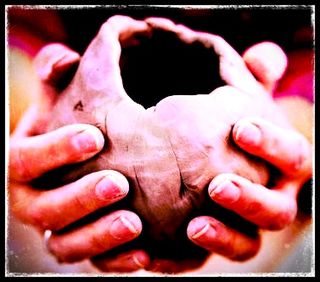Depression
Clay Art Therapy and Depression
Can clay be the way to mediate depression?
Posted July 31, 2017

To date, there have been relatively few investigations of just how the use of clay in art therapy can help in the reparation and recovery of individuals with mental health disorders, including major depressive disorder (MDD). To understand more about the role of art therapy in the treatment of emotional disorders, Hong Kong researchers Nan and Ho (2017) recently conducted a randomized controlled trial (RCT) to determine if short-term “clay art therapy” could mediate a variety of challenges related to depression in adults. Their study focuses on several objectives including a decrease in symptoms and improvement of general health, a sense of well-being and the ability to verbally communicate feelings. It is the first RCT to investigate the effectiveness of clay art therapy as a complementary treatment for depression in adults.
Art therapists have often intuited that introducing clay in art therapy sessions capitalizes on the unique characteristics of this tactile, highly sensory medium. First, there are a variety of somatosensory qualities of clay [Elbrecht, 2012; 2015) including the prominent experiences of touch and physicality. Because clay is a three-dimensional material, there are also unique perceptual and decision-making responses that involve what Nan and Ho cite as “complex coordination of different cortical regions” of the brain. Finally, the self-soothing characteristics of clay may enhance self-regulation through interaction with the medium—smoothing, pounding, building and shaping, among other ways clay can be manipulated and experienced.
In this current study, a clay art therapy (CAT) group was compared with a non-directive visual art (VA) control group; all participants were outpatients receiving medication and treatment for their depression, including follow-up from social workers. Each group of six to eight participants attended six 2.5 hour weekly sessions. A qualified art therapist facilitated the clay making process during the weekly CAT sessions; these sessions included actual clay work, reflections on the treatment process and sharing of clay art expressions. The VA groups also attended six 2.5 hour weekly sessions; these groups were facilitated by social workers and included recreational activities such as handicrafts, coloring mandala images, listening to relaxing music and verbal sharing. Approximately 100 participants participated in either a CAT or VA group and several standard measures were used throughout the study to measure outcomes: the Beck Depression Inventory, General Health Questionnaire, Body-Mind-Spirit Well Being Inventory and the Toronto Alexithymia Scale [for readers unfamiliar with this instrument, it measures a lack of understanding, processing or describing emotions].
In brief, results of this study suggest that CAT sessions were more effective than the nondirective VA sessions in reduction of depression and improvement of daily functioning, general mental health and a sense of well-being. The researchers note that their findings are consistent with the results from other investigations that conclude that strengthening emotional regulation skills supports positive outcomes in the treatment of depression, particularly in the area of cognitive functioning and symptom reduction. An interesting finding emerged from the results of the alexithymia scale. While alexithymia was not significantly reduced immediately after the CAT intervention, three weeks after the termination of the groups, there was significant improvement in contrast to the VA groups which did not show any change.
This study underscores the important role that the medium of clay may play in not only art therapy, but also its importance in emotional regulation as a foundation for other reparative processes such as attunement, attachment and self-expression. Although not discussed in this investigation, the presence of a qualified art therapist as facilitator in the CAT groups may have played an important role in outcomes; perhaps future studies from these researchers will begin to tease out this factor in efficacy of art making as treatment for depression. For more details about the specifics of this well-constructed study, see the reference list below; for more information on clay as a form of intervention, be sure to read the work of art therapist Cornelia Elbrecht (2012; 2015).
Be well,
Cathy Malchiodi, PhD
© 2017 Cathy Malchiodi, PhD
For readers interested in the role of clay in art therapy, see these sources:
Elbrecht, C. (2012). Trauma healing at the Clay field. London: Jessica Kingsley Publishers.
Elbrecht, C. (2015). The Clay Field and developmental trauma in children. In C. Malchiodi (Ed.), Creative Interventions with Traumatized Children (pp. 191-211). New York: Guilford Press.
References
Nan, J. K. M, & Ho. R. T.H. (2017). Effects of clay art therapy on adult outpatients with major depressive disorder: A randomized controlled trial. Journal of Affective Disorders, 217, 237-245.


